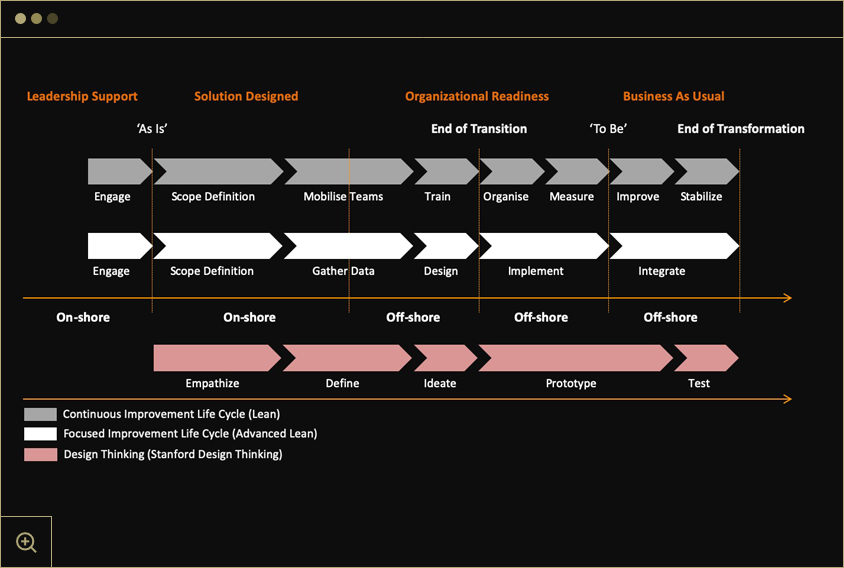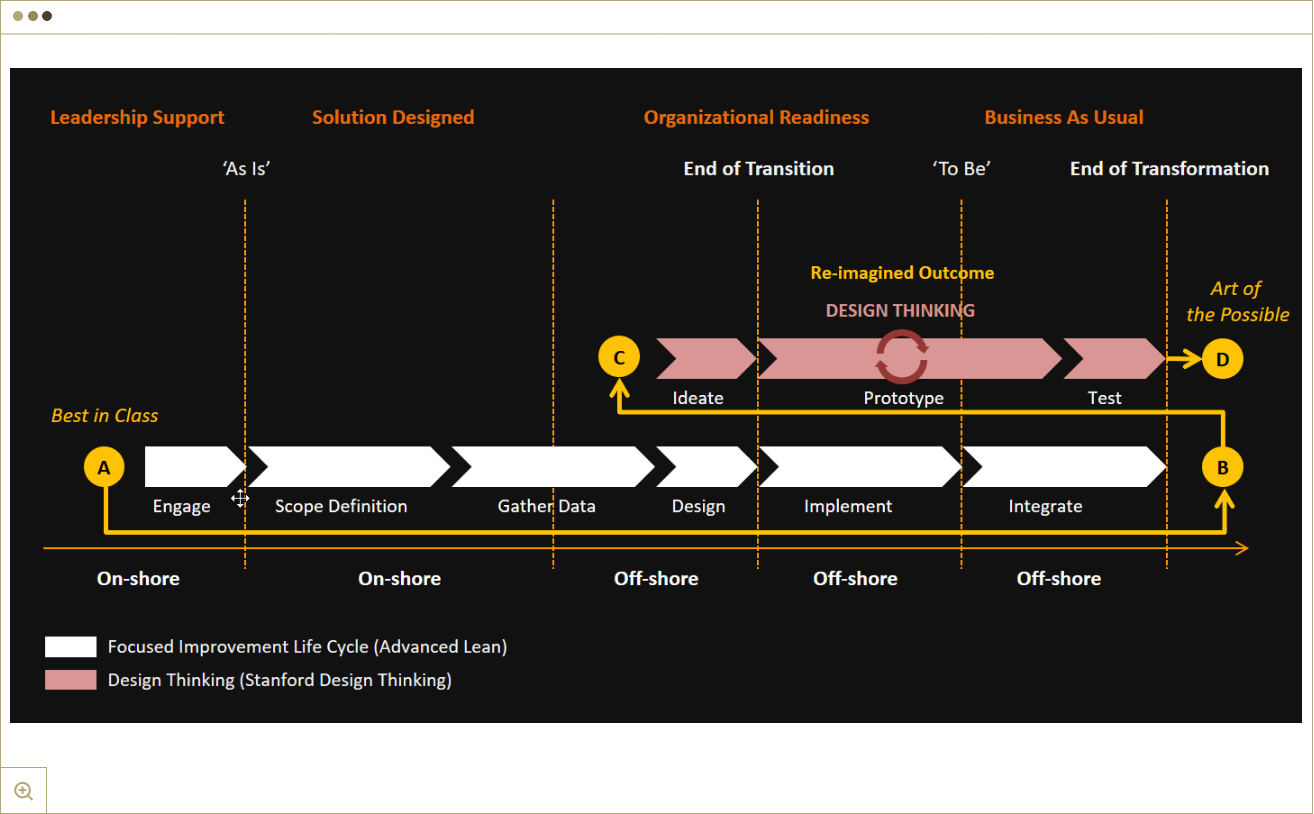What Is Lean?
Lean establishes a culture and a process for systematic continuous improvement which maintains and enhances the daily performance, drives an on-going workplace improvement and supports a step change (focused improvement) across your organization.
Generally, the continuous improvement environment is implemented before or in parallel with a focused improvement to lay the foundation for change. We strongly recommend to establish the continuous improvement environment first prior to any step change improvements together with Kaizen initiatives or Problem Solving sessions.
MMC follows a structured approach with regard to Continuous and Focused Improvements. We work closely with you to understand the value stream and its issues, to identify specific efficiency savings and revenue opportunities, and to change the culture and behaviours within a team. Lean is an approach to process design and improvement which maximises efficiency, eliminates waste and variability within a process through a set of principles as well as an extensive portfolio of tools and techniques.
What is advanced lean?
Advanced lean is challenging the status quo of Industry best practices. Although lean provides a reliable benchmark (Best in Class) for process and operational excellence, it does not necessarily represent the latest state of the art thinking, i.e. the art of the possible. Disruptive technologies (e.g. Artificial Intelligence, Blockchain, Virtual / Augmented Reality, Internet of Things) trigger disruptive innovations which significantly affect the way a market or an industry function works.
Finding new solutions to present problems, or even in discovering problems that people might not even know they have, requires a new approach. The art of the possible is not just represented by introducing or implementing new ideas or methods. It requires innovative thinking, a process that involves multiple activities to uncover new ways to do things. Tomorrow’s workforce needs to be up-skilled on the potential of disruptive technologies to think outside the box in order to create incremental enhancements.
“Innovations create bigger opportunities and are critical for the survival, economic growth, and success of a company. Innovating helps developing original concepts and is a driver of optimizing operations. Companies that innovate are able to set the organization in a different paradigm in order to identify new opportunities and best methods to solve current problems.” (ref. Toolshero)
How is advanced lean applied?
First, we look at the current outcomes and process efficiencies and challenge / question its performance. According to the latest research, focusing on efficiencies alone misses the truly transformational opportunity: to create self-adapting and self-optimizing intelligent processes and operations that use machine learning algorithms and real-time data to continuously improve. Re-imagining of processes and outcomes represents a great step forward that will unlock entirely new roles and new ways for humans and machines to work together.
Re-imagining of processes and outcomes requires also an iterative approach. Design thinking in incremental steps helps to build and evaluate new processes, samples, models, or releases quite early in its development life cycle. This in return, significantly reduces costs and development times which would otherwise incur quite late. MMC applies the LUMA system of innovation as a unique framework for practicing human-centred design. It is an activities-based way of creative problem-solving that focuses on people above other factors whether the challenge is making a better product, process, service or anything else.
What is continuous improvement?
Continuous improvement, or Kaizen, is a method for identifying opportunities for streamlining work and reducing waste. The practice was formalized by the popularity of Lean / Agile / Kaizen in manufacturing and business, and it is now being used by thousands of companies all over the world to identify savings opportunities.
Continuous improvement can be viewed as a formal practice or an informal set of guidelines. Many companies have shifted focus to more formal approaches to project and process management such as Lean / Agile methodologies (Kanban, Kaizen, Scrum, XP).
For example, Kaizen and Kanban can be integrated to allow for continuous improvement through visualization of workflow. In all Lean / Agile methodologies, continuous improvement is a primary focus, in addition to high customer service standards and the reduction of waste in the forms of cost, time and defects (rework).
What is a gemba walk?
A real-world problem that impacts the company’s profits and customers’ experience can become more of a theoretical abstraction, reduced to data reports and endless talk about the issue around a conference table.
Recognizing this problem, process improvement leaders at Toyota developed what they call a Gemba Walk. The translation of the term from the root Japanese word is ‘real place’. It also is known as ‘the place where value is created’.
In the practice of Lean, it means taking the time to watch how a process is done and talking with those who do the job. That moves it from an abstraction to a real-world challenge. The Gemba Walk has been applied to process improvement across many industries. That can include software engineering, marketing operations and customer service centers.
This in-person observation allows leaders to see the difference between what they assumed is happening and what is actually happening. It also gives them a chance to interact with the people doing the job and see exactly where it is done, as opposed to imagining it from a far-away conference room.
Source: Shortened and modified version of 'LUMA System of Innovation', 'Lean Principles 101', and 'Six Sigma Daily'
https://www.luma-institute.com/why-luma/our-system/
https://www.planview.com/resources/guide/lean-principles-101/what-is-continuous-improvement/
Focus Point: Design Thinking And Innovation
Design thinking is an iterative process to understand the user, to challenge assumptions, and to redefine problems in an attempt to identify alternative strategies and solutions that might not be instantly apparent with our initial level of understanding. At the same time, design thinking provides a solution-based approach to solving problems. It is a way of thinking and working as well as a collection of hands-on methods.
Design thinking revolves around a deep interest in developing an understanding of the people for whom the products or services have been designed. It helps to observe and develop empathy with the target user. Design thinking helps in the process of questioning. It is extremely useful in tackling problems that are ill-defined or unknown, by re-framing the problem in human-centric ways, creating many ideas in brainstorming sessions, and adopting a hands-on approach in prototyping and testing. Design thinking also involves ongoing experimentation such as sketching, prototyping, testing, and trying out new concepts and ideas.
What is design thinking?
There are many variants of the design thinking process in use today, and they have from three to seven phases, stages, or modes. However, all variants of design thinking are very similar. All variants of design thinking embody the same principles, which were first described by Nobel Prize laureate Herbert Simon in 'The Sciences of the Artificial' in 1969. Most widely used is the five-phase model proposed by the Hasso-Plattner Institute of Design at Stanford University. Its approach is at the forefront of applying and teaching design thinking. The five phases of design thinking are as follows:
-
Empathise
with your users.
-
Define
your users' needs, their problem, and your insights.
-
Ideate
by challenging assumptions and creating ideas for innovative solutions.
-
Prototype
to start creating solutions.
-
Test
solutions.
Design thinking is often referred to as ‘outside the box’ thinking, as designers are attempting to develop new ways of thinking that do not abide by the dominant or more common problem-solving methods.
At the heart of design thinking is the intention to improve products and services by analyzing and understanding how users interact with them and investigating the conditions in which they operate. It also asks significant questions and challenging assumptions. The solution generation process helps to produce ideas that reflect the genuine constraints and facets of that particular problem. Design thinking helps to do the right kind of research and to prototype and test products and services so as to uncover new ways of improving the product, service or design.
Since the disruptions in human development caused by the Industrial Revolution, analysts have been strategizing ways of streamlining just about every business, production and economic process imaginable with the aim of extracting the maximum benefit from the least amount of time and resources. While this may have had some degree of success on the level of productivity and efficiency, the recipe to that much-needed innovation within all sectors has been somewhat of a conundrum.
This is where design thinking steps in with a bold new human-centered approach at radically changing how to go about exploring problems and finding solutions to those problems, helping to break out of the old moulds we have become stuck in, so as to take a fresh look at the world around us.
People are increasingly seeking out those products, services, and organisations that they personally connect with on a meaningful level. Many people are selecting the few options that speak directly to their human needs and experiences. This has driven human-centered design and design thinking approaches of all types.
Source: Shortened and modified version of 'What is Design Thinking?', and 'Design Thinking: New Innovative Thinking for New Problems'


